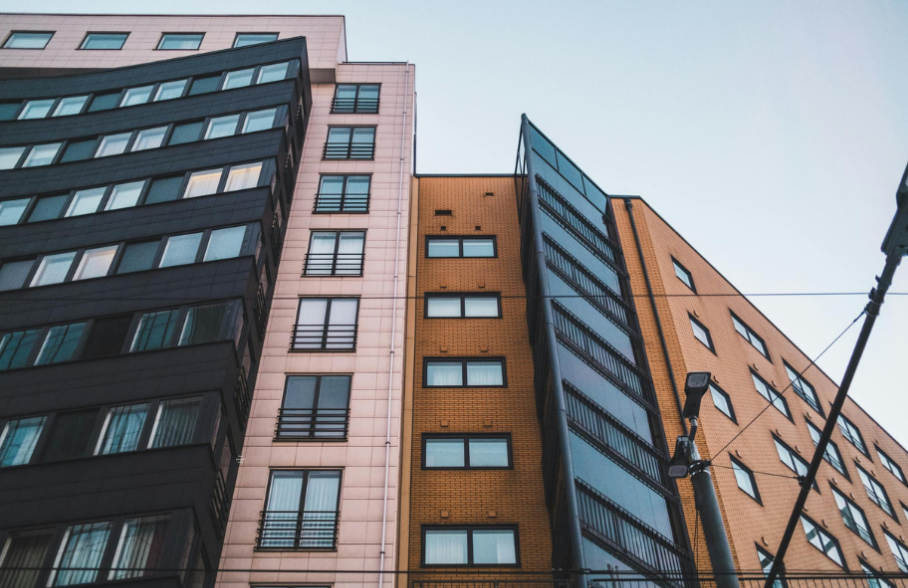
|
Highlights:
|
Has your tenant complained of damp? Perhaps you’ve been told that your property has rising damp?
Rising damp is a serious problem - if left unchecked it can cause severe damage to your tenant’s health and your property.
But don’t panic. The good news is fixing rising damp usually comes down to taking the right measures and fixing the damaged building areas.
This guide explains everything you need to know about rising damp, including what it is, what causes it, and how to fix it.
What Is Rising Damp?
Rising damp is when ground moisture travels through tiny spaces in a property’s bricks and mortar, sometimes known as capillary action. The water is sucked through these holes and up into the property’s walls.
This makes the inside of the wall, as well as associated materials like plaster, skirting boards, floorboards, and any fixtures wet. This can lead to them rotting.
Rising damp often first appears as peeling paint and wallpaper, or crumbling plaster. If the problem gets worse, then a stain known as a tide mark appears on the wall, which is the level that the water has travelled up to.
What Causes Rising Damp?
Most cases of rising damp are caused by problems with the damp-proof course.
This is a waterproof barrier installed in the external walls just above ground level.
Most buildings built after 1850 have one, and it prevents groundwater from entering and travelling through the walls.
A damp-proof course is usually made from a non-absorbant and water-resistant material like slate, bitumen or plastic.
Buildings suffering from damp may be experiencing one of several problems:
The building doesn’t have a damp-proof course
If your property was built before 1850, then the chances are that it doesn’t have a damp-proof course. We’ll explain how you can get one fitted later in the article.
The damp-proof course has failed
Damp-proof courses can degrade over time, resulting in cracks.
The damp-proof course has been bridged
This is where moisture is able to enter the wall above the damp-proof course. There are several ways this could happen:
-
The external ground level goes above the damp-proof course
-
External structures touching the property
-
The damp-proof course on an adjacent property is higher than yours is
-
Debris in the cavity wall
-
Salt deposits left by previous rising damp which attract moisture
What Are the Signs of Rising Damp?
The following signs may indicate that your property has rising damp:
A tide mark appears on the wall
The water that travels through the wall can usually only reach a height of up to a metre. This leaves a visible damp line indicating the height that the water reached.
Salt deposits
The water that travels through the wall often contains salt. When the water evaporates, it leaves behind salt deposits that appear as fluffy white residue. It also causes paintwork to blister and bubble.
Damage to wallpaper
The moisture in the wall causes the wallpaper to become heavier and for the adhesive to fail.
Black mould
Damp conditions will cause mould to grow. Mould is a fungus that enjoys warm, wet conditions - like a damp wall.
Musty smell
Damp and mould create an unpleasant musty smell. This makes the property particularly unpleasant to live in.
Damage to building fabric
The salt dissolves metal binders and attacks mortar brick and stone in the wall. This causes the wall to crumble. Any timber-based materials like skirting boards and floorboards may be damaged and start to rot.
Heat loss
Walls are critical in keeping properties insulated. Damp walls conduct heat and allow it to escape the building, making it colder.
Outdoor damage
You might also be able to see signs of damage on external walls - for example, the mortar may be crumbling between the bricks. You might also see green or brown stains.
Did My Tenants Cause Rising Damp?
It’s highly unlikely that your tenant caused rising damp. The only way they could have done this is by bridging the damp-proof course - for example, if they piled earth against the outside wall.
Lots of landlords blame rising damp on tenants, because they confuse it with condensation. For the same reason, many tenants complain that their home has damp, when it actually has condensation.
-
Damp is caused by groundwater travelling through the walls
-
Condensation is caused by water particles in the air
These water particles are usually created by everyday activities like showering, cooking, or drying wet clothes indoors. It can also be caused by warm air hitting cold surfaces and turning into water droplets.
Condensation can usually be fixed by improving the property’s ventilation and insulation.
Is Rising Damp a Serious Problem?
Rising damp is a very serious problem for both you and your tenant. There are several reasons for this:
It’s bad for your tenant’s health
Mould releases spores that contain toxins that can cause respiratory issues - especially if you are asthmatic, have a lung condition, or have a weakened immune system.
It can cause many unpleasant illnesses, from headaches to skin rashes and even a fever or bronchitis.
Children are particularly at risk from health issues caused by mould - which can be fatal. This is exactly what happened to 2-year-old Awaab Ishak who died from a respiratory disease due to damp and mould in his family’s housing association flat.
Damage to your property
If the health implications weren’t bad enough, rising damp can also cause severe damage to your property.
At the very least it looks and smells unpleasant, but at worst, it can cause fixtures to rot, paint and wallpaper to peel, and walls to crumble.
The longer you leave it, the worse the problem becomes and the more expensive it becomes to fix.
Your property is less desirable
Understandably, no one wants to live in a house that has damp. This means that it will be harder for you to find tenants. Even when you do, they are less likely to enjoy living at the property and ultimately may look to move out.
Insurance often doesn’t cover it
Many landlord insurance policies don’t cover rising damp. When you buy the property, you usually sign a statement saying it is in “good condition”.
If your property has rising damp, then it is not in good condition. This means you’ll have to pay to fix it yourself and your policy could be invalidated if you don’t fix the problem or tell your insurer.
As a result, fixing damp is often expensive and affects your cash flow.
Is Buying a Property with Rising Damp a Problem?
Not necessarily. But if you are thinking of buying a property that you suspect has rising damp, then get a Royal Institute of Chartered Surveyors (RICS) approved damp survey performed on it.
They will confirm whether there is damp, how bad it is, what the cause is, and how to deal with it.
Are Landlords Responsible for Rising Damp?
Under the Homes (Fitness for Human Habitation) Act 2018, landlords are responsible for keeping properties suitable for human habitation. This means they are responsible for issues relating to the property’s building fabric, including resolving rising damp.
If the damp has gone mouldy and it’s affecting your tenant’s health or stopping them from using some rooms, then you should investigate and fix the problem urgently.
A less reactive approach is to perform regular inspections and proactively deal with issues that could eventually create rising damp.
What If My Tenant Reports Rising Damp?
If one of your tenants reports rising damp, then their health and your property could be at risk - so you should act fast. Plus the longer you leave the problem, the worse it will get.
Landlords have a statutory duty to ensure their properties are suitable for human habitation.
Respond
By law, you have 14 days to respond to a tenant who has reported rising damp to tell them how you will deal with the problem, and when.
Assess the situation
Damp is often confused with condensation. It’s worth asking the tenant some questions or going to look at the problem yourself to assess the extent of the issue.
One good way to tell whether you are dealing with rising damp or condensation is by looking at where the wet patches are. If they are one metre above the floor or below it, then it could be rising damp. Any higher than that is more likely to be condensation.
Condensation also tends to form on the surface, while damp is in the building fabric itself. You could dig out some of the wall material to see if it is moist inside.
Alternatively, you might be dealing with penetrating damp. This is when damp is caused by water that is pooling within the property - for example, from a leak in the roof or a dripping pipe.
Get a survey
If you think it could be rising damp, then hire a RICS-approved damp surveyor to investigate the problem and advise you on what action to take.
Fix the problem
Next, it’s time to deal with the root cause of the damp. More often than not this will involve getting a damp-proof course installed or repaired. We’ll list the different types of damp-proof course solutions available later in this article.
Replace damaged materials
If anything has been damaged by the rising damp, then you should have it replaced. This could include rotten plaster, brickwork, wallpaper, paint, skirting boards, woodwork, etc.
Before re-plastering, consider using a mesh membrane or using a breathable, waterproof render to stop mould from forming again.
You may have to use a dehumidifier before you use the new materials to ensure the wall is dry. This is a device that takes moisture out of the air and there is a range of different options available.
Redecorate
If you treat rising damp, then you are required by law to redecorate any room that has been damaged. Make sure you use rising damp treatment products such as anti-mould cleaner, damp seal paint, and a salt-neutralising solution. This will help stop the problem from returning.
Monitor
Rising damp has a habit of returning. It’s a good idea to monitor the property to ensure that the remedial work has been successful. Damp can sometimes return because salts deposited by the rising damp attract moisture.
You can buy moisture detectors that can help you spot potential signs of damp. These are useful to help you spot recurring damp issues - but you can also bring them with you during regular property inspections, as it will help you spot issues early.
You can also get more advanced solutions. For example, we recommend using a Switchee device. This is hardwired into the home and uses a 2G sim to send minute-by-minute data on damp and mould to landlords. This also means it can continue to work when tenants move out.
Don’t rely solely on a moisture detector. If you think you have damp, then call in an expert to investigate the problem.
Rising Damp Solutions
Fixing damp usually involves solving the problem with a damp-proof course. If your property doesn’t have one or needs a new one, then there are several options available:
Damp-proof injection cream
This is when holes are drilled in the property’s wall six inches above ground level. A cream is then injected into the holes. This makes its way into the wall’s capillaries and then dries, stopping any moisture from travelling through them.
Damp-proof membrane
This involves installing a membrane in the wall. This is a more complex solution than injecting cream, as you have to remove bricks from the wall, install the membrane, and then replace the bricks.
Electrical (osmotic water repellence)
This involves drilling holes into the wall and then feeding titanium wires into them. These wires are connected to a transformer and control unit that passes an electric current through them which repels water.
This is usually best suited for properties where a membrane or a cream-based solution has failed.
Deal with bridges
Fixing bridged damp-proof courses is usually relatively simple and just involves removing whatever has caused the bridge.
For example, a previous owner may have added turf in the garden of your property and this could have put the ground level above the damp-proof course.
In this case, you could dig a trench to six inches below the damp-proof course and ensure that it has good drainage.
If you can’t remove the bridge - for example, when an adjacent property has a higher damp-proof course than yours, then you will need to install a new damp-proof course in your walls.
Carry out regular planned preventative maintenance
Planned preventive maintenance (PPM) is when a landlord takes a proactive approach to property inspection and repair. By inspecting your property annually and replacing or repairing things before they get worse, you can ensure that you spot rising damp early, or better yet, stop it from happening altogether.
Some tenants fail to report serious damp and mould problems. In these situations, you’ll still be responsible for ensuring the home is habitable, which is another reason why regular inspections are important. It’s also a good reason to install a water monitoring device.
Avoid Rising Damp in Your Properties with EVO
Landlords are under greater scrutiny than ever when it comes to damp and mould. It’s therefore important to ensure that you spot the signs early and treat rising damp promptly.
This is where using a property management platform like EVO can help. It allows you to manage issues such as damp and mould and puts you in touch with approved tradespeople who can promptly deal with any issues that might arise.
We can also install and provide data on the likelihood that damp and mould could occur using IOT devices. This allows you to take a more proactive approach to managing these issues.
By transforming how maintenance, management, and repairs are delivered, EVO connects owners, residents, tradespeople, and property managers to reduce costs and ensure transparency.
Our easy-to-use digital solution features:
-
Online dashboard: All your people, places, repairs, and service history all in one place, with a real-time calendar, messaging, and secure document storage.
-
Helpdesk: There to help with all repair and planned maintenance needs fast.
-
Repairs: Certified tradespeople available 24 hours a day, ensuring a fast response and quality workmanship.
-
Reminders: Ensuring nothing falls through the cracks.
-
Service history: All jobs and services are logged and easily accessible, with completion notes and images.
-
Compliance: Gas safety compliance, electrical testing and more, with digital records and service reports all in one place.
-
Emergency cover: Providing trustworthy 24/7 emergency services in case of serious issues.
Get in touch to learn how we can help you manage your inspection and repairs more effectively.


